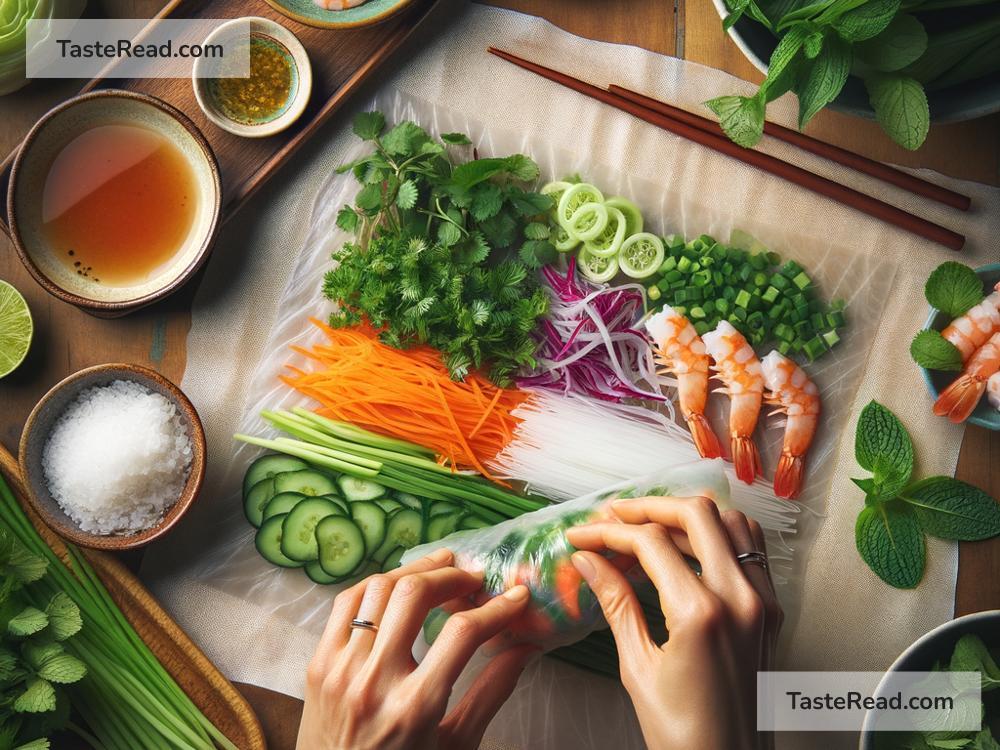Discovering the Intricacies of Handcrafted Rice Paper Roll Assemblies in Vietnam
Vietnam is a country full of beautiful landscapes, rich history, and delicious food. Among its wide range of traditional dishes, bánh cuốn (steamed rice rolls) and fresh spring rolls (gỏi cuốn) stand out as some of Vietnam’s most iconic and beloved treats. These dishes are made using delicate rice paper, which is handcrafted in villages across the country. In this blog, we’ll explore the fascinating process of making rice paper and how it is assembled into delicious rolls that reflect the careful work and creativity of Vietnam’s food culture.
The Art of Crafting Rice Paper
Rice paper (bánh tráng) is a thin, round sheet made from a simple mixture of rice flour, water, and salt. While it may look simple, crafting rice paper is truly an art that requires skill, patience, and experience. The people who make rice paper often come from families that have passed down the techniques for generations. Many of these artisans live in villages where rice paper production has been a way of life for centuries.
The process begins with grinding rice until it becomes a smooth flour. The rice flour is mixed with water and a pinch of salt to create a thin batter. Next comes the cooking stage, which is often done over a wood-fired stove. A steaming pot is covered with a thin cloth, and the batter is ladled onto the cloth to form a round, smooth sheet. The artisan then quickly spreads the batter evenly using a flat tool before letting it steam for a few seconds.
Removing the cooked rice paper is another delicate step. The artisan gently lifts the thin sheet and places it on woven bamboo mats to dry in the sun. This outdoor drying process gives rice paper its characteristic texture and flavor, as it absorbs fresh air and sunlight. Once dried, the rice paper is ready to be used in making rolls.
Assembling Rice Paper Rolls: A Perfect Balance of Flavors and Textures
Rice paper rolls come in different varieties and styles, from steamed rolls filled with savory ingredients to fresh spring rolls packed with herbs and vegetables. Each type reflects Vietnam’s focus on balancing flavors, textures, and ingredients to create harmony in every bite.
Steamed Rice Rolls (Bánh Cuốn)
Bánh cuốn is a dish of thin steamed rice paper stuffed with a savory filling, usually made from seasoned minced pork, wood ear mushrooms, and shallots. The process of assembling bánh cuốn requires a steady hand and great attention to detail.
First, the freshly steamed rice paper is carefully removed from the cloth, much like how the rice paper is lifted during the crafting process. It is placed over a flat surface, and the filling is spread in a thin line in the center. The artisan then folds the rice paper over the filling, rolling it into a soft, delicate package.
Bánh cuốn is typically served with fresh herbs, crispy fried shallots, and dipping sauce, known as nước chấm. This sauce is a blend of fish sauce, lime juice, garlic, chili, and sugar, providing the perfect tangy, salty, and slightly sweet addition to the dish. Eating bánh cuốn is not just about enjoying the flavors; it’s also about appreciating the tender texture of the rice roll and the work involved in making it.
Fresh Spring Rolls (Gỏi Cuốn)
If you’re looking for something light and refreshing, gỏi cuốn is the perfect choice. These rolls showcase Vietnam’s love for fresh ingredients like shrimp, pork, rice noodles, lettuce, and aromatic herbs like mint and cilantro. Assembling gỏi cuốn requires precision in layering the ingredients to ensure every bite is balanced.
To make a spring roll, a round rice paper is softened by dipping it briefly in water. Once softened, it becomes pliable and ready to wrap around the filling. Ingredients such as shrimp, pork, herbs, and noodles are placed near the center of the rice paper, and the sides are folded inward before rolling it tightly.
Gỏi cuốn is usually enjoyed with peanut dipping sauce or an upgraded version of nước chấm. It is a dish that represents Vietnam’s focus on freshness and simplicity, allowing the natural flavors of the ingredients to shine.
Why Handcrafting Matters
While machine-made rice paper is readily available, handmade rice paper carries a certain charm and authenticity. It is thinner, more aromatic, and has a unique texture that reflects the care and effort put into its creation. The practice of handcrafting rice paper preserves a cultural tradition that connects modern dishes to their historical roots.
In villages like Cu Chi and Phu Hoa Dong, visitors can experience rice paper production firsthand. Many artisans take pride in sharing their techniques and explaining the significance of rice paper in Vietnamese cuisine. Watching them work and hearing their stories is a reminder of how food is deeply tied to culture and identity.
Conclusion
The process of making and assembling rice paper rolls is a perfect example of Vietnam’s dedication to craftsmanship, balance, and tradition. From the steaming pots in small villages to the vibrant street food stalls in bustling cities, rice paper rolls tell a story of community, creativity, and a passion for flavors. Whether you’re biting into a soft bánh cuốn or enjoying a refreshing gỏi cuốn, you’re tasting more than just food—you’re savoring a piece of Vietnam’s soul.
So, the next time you visit Vietnam, take a moment to appreciate the artistry behind these rolls. Try learning how to make them yourself, or simply enjoy watching an expert artisan skillfully assemble each one with care. By doing so, you’ll discover not just a delicious dish, but the heart and history behind it.


